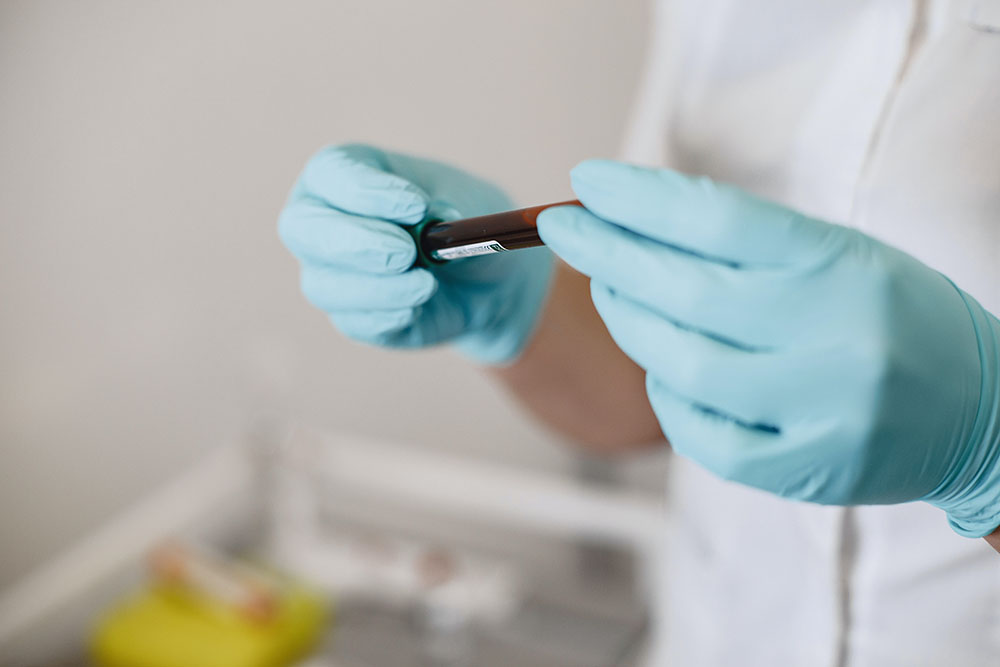There are plenty of reasons for why someone would want to check their iron levels; concerning symptoms, setting health goals, and peace of mind to name a few. Getting a test for anemia is something a healthcare provider can easily order if they see a need, however there are also anemia home test options to be aware of as well.
Regardless of your purpose in getting a blood test for anemia, it is best to go over the results with a doctor or healthcare provider. Even if you do a home test without labs ordered by a doctor, consulting with a professional will ensure that you’re able to get the care that you need.
Let’s dive into some common questions about anemia home test, the process, and what else you should know.

First, let’s establish what you’re really looking for with your anemia home test. Any test for iron levels and anemia should include a complete blood count, or CBC.
A complete blood count test measures the level of hemoglobin and the amount of red blood cells in the sample, just as the name suggests. Depending on gender, the measurements for red blood cells and hemoglobin should be in a health range to help rule out signs of anemia.
Another test that is effective for diagnosing anemia is a test that measures the size and shape of a red blood cell. Generally, the red blood cells should be fairly uniform with no abnormally large or small cells. Irregularities could denote anemia among other conditions.
It’s also important to note that there are multiple types of anemia, and not all types are due to a short term iron deficiency. Some types, such as sickle cell anemia are inherited.
If you’re wondering if you should get an anemia home test or see a doctor, it’s important to be familiar with the symptoms of anemia and the symptoms of iron deficiency.
Anemia is a result of a prolonged, untreated iron deficiency, so there are similarities between the symptoms.
Anemia Symptoms:
Iron Deficiency Symptoms
If you’re concerned about any of these symptoms, consult with a healthcare provider on the best next steps. They may order labs for you or suggest an at home test. There are also plenty of mobile blood lab services that will send a mobile phlebotomist to your home to take a blood sample.
At home anemia and blood tests can be incredibly convenient. They allow you to skip the lines and wait times and can still generate results rather quickly. If you’re in the market for an at home test to pair with an at home IV, send us a message.
There are a variety of companies that offer DIY kits that require a small sample of blood and often gives limited insights and details. These tests are great if you’re looking for very specific levels and measurements. See a highly rated list of at-home anemia tests here.
An alternate route would be to seek a company that does mobile blood labs or offers at home blood draw services. These companies typically send a mobile phlebotomist to your residence to collect a sample of blood that is quickly sent to a lab to be tested. These tests tend to be more robust than the DIY packets mentioned above.
Lastly, if you aren’t interested in checking your iron levels at home, you can visit your doctor who can place an order for those labs. This option is the least convenient but can be as robust as an at home blood draw service.
If you haven’t already set an appointment with your doctor to go over the results from your anemia home test, it is a good idea to consult with them about the results.
If you were prompted to take a test at home because of symptoms or have just experienced symptoms even after a change in diet to incorporate more iron, make an appointment with a doctor. Iron deficiencies can often be resolved through taking supplements and making diet changes but anemia in some instances can be the result of an iron deficiency that hasn’t been taken care of. It is a good idea to see a doctor so they can help you get your levels back on track.
If you have pre-existing conditions that could be contributing to an iron deficiency, it is especially important to see a doctor so they can help you navigate the necessary next steps to getting your health back in order or explore an anemia home test.
As noted previously, there are multiple types of anemia, and not all are caused by iron deficiencies. The distinction between iron deficiency anemia and the type of anemia is also important to mention because different causes necessitate different treatments.
Iron deficiency is when there is simply not enough iron in the blood overall, where anemia is a condition described by there not being enough red blood cells to take oxygen throughout the body, an instance that requires iron. According to Healthline if an iron deficiency is left untreated, it will inevitably lead to anemia.
The type of anemia that is caused by iron deficiency is called Iron Deficiency Anemia. Other vitamin deficiencies can also cause anemia, such as a B12 deficiency. In these cases, your doctor may recommend a B12 IM shot.
Sickle cell anemia is a type that is inherited. This is a condition in which red blood cells, which are usually round, become crescent shaped making them unsuitable for transporting oxygen to the rest of your body.
Anemia may also be caused by other conditions unrelated to the amount of iron in the blood. Some of these conditions can be kidney disease, hypothyroidism, lupus, diabetes, and arthritis. If you’re concerned about any of these conditions, you might decide to try an anemia home test.